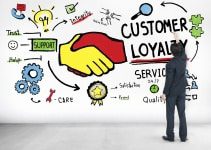Talent assessments help hiring managers and HR professionals take a more objective perspective of potential hires, resulting in credible and more accurate awareness of a candidate’s natural tendencies. When shared with candidates, it helps individuals improve self-awareness. Raising self-awareness is critical for employees to take ownership of their behaviors and traits. Using hiring and development assessments are an excellent way of refining training practices and improving organizations from within. At the same time, assessment tools for employee development can be simple and inexpensive. Below are five easy-to-implement assessment approaches for employee development.
1. Evaluate your existing data to identify training needs
Traditionally, companies develop their training strategies based on industry-specific regulatory requirements. Or they create training programs based on perceived needs. Unfortunately, this approach is both inefficient and ineffective. Instead, use your existing data and information to evaluate your employees and identify training needs. For example, if your employee surveys data suggests that many employees are working overtime, you can train your employees on time management and prioritizing tasks. If your customer scorecards indicate a low rating, you can prepare your employees for more effective customer service. Such internal data can help you determine what skills your staff may be lacking and develop training programs to address those shortcomings.
2. Use formal employee assessment tools
Several formal employee assessment tools are available to assess your employees’ personalities and communication styles. Every personality type has its strengths and weaknesses, creating unique challenges. Such assessment tools can uncover blind spots, such as areas of unknown weaknesses and hidden strengths, which can be further leveraged or adapted for future roles. These tools allow an organization to zero in on the qualities and competencies needed for a particular position and then measure the degree to which those exist in an employee.
3. Encourage self-assessment periodically
Most self-assessment tools ask employees to list their strengths, weaknesses, recent accomplishments, and goals. Check if employees need help learning how to accomplish the goals they’ve set for themselves. For example, are they listing weaknesses that have to do with communicating their ideas? Or dealing with conflict? Such insights can help you create training programs for employee development.
4. Determine which team members have leadership potential
Succession planning has become an increasing area of investment for leading companies. The development process lays the foundation for a career trajectory and uncovers possibilities beyond the current position. For example, use data to gauge a person’s leadership-specific attributes, such as interpersonal communication and conflict resolution capabilities. Staff is motivated to perform when internal promotions are regular, and employees often feel more at ease when their new supervisor is familiar. That air of familiarity will foster a positive working environment and help maintain high employee morale.
5. Improve the efficacy of training
Your company should focus on testing job-related skills to identify an employee’s developmental needs. For example, a company can administer skills assessment exams to a specific role. They can analyze the results of those skills tests and then create a program to remedy any deficiencies among existing staff. Once those team members have completed the assigned training and development courses, the organization can retest them. Assessments should demonstrate a notable improvement in each employee’s core competencies. Companies can leverage this data to guide the development of future training strategies, thereby making their employee development program more effective.
Conclusion
Employees generally respond positively to an employer’s efforts to nurture their talents. Most employees will be happy that the organization is investing in them, helping develop new skills and offering the opportunity for advancement based on demonstrated talents. New skills increase upward mobility in organizations, which most employees aspire toward. Assessments are valuable for improving employee recruiting, retention, and satisfaction. Effective use of reviews helps improve every part of the employee life cycle, including interviewing, onboarding, and professional development — not to mention decreasing employee turnover and company spending and increasing productivity and engagement.



